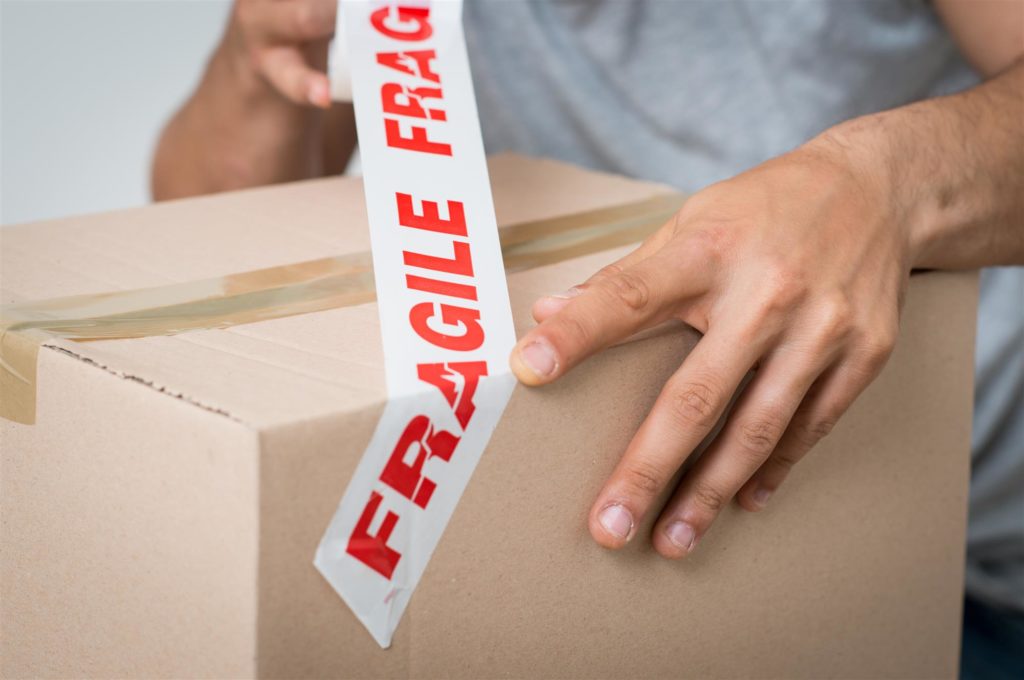Fragile items require special care when it comes to storage. Whether it’s a delicate piece of china, a prized collectible, or a sentimental family heirloom, these items are often irreplaceable and need to be treated with the utmost care to avoid damage. If you have fragile items that you need to store, it’s important to take the necessary precautions to ensure that they are safe and protected.
In this blog post, we’ll explore some tips and best practices for storing fragile items to help you keep them in good condition for years to come. We’ll cover preparing, packing and storing fragile items at home or in a storage unit near you.
Preparing fragile items for storage
Before you start packing your fragile items, it’s important to do some preparation to ensure that they are ready for storage. First and foremost, you should make sure that your fragile items are clean and dry. Any dirt or moisture on the surface of the item can lead to damage over time, so be sure to give your items a thorough cleaning before you start packing them away.
Once your items are clean and dry, it’s time to assess their condition. Take a close look at each item and look for any cracks, chips, or other imperfections that could potentially cause problems during storage. If you find any damage, it’s a good idea to have it repaired before you begin packing. This can help prevent further damage and ensure that your fragile items are in the best possible condition when you go to retrieve them from storage.
Packing fragile items for storage
Once you’ve cleaned and assessed the condition of your fragile items, it’s time to start packing them. The key to successfully storing fragile items is to use proper packing materials to protect them from damage. Some of the best materials for packing fragile items include:
Bubble wrap
Bubble wrap is a great choice for protecting fragile items during storage. Its cushioned surface provides a layer of protection against bumps and impacts, making it ideal for protecting delicate items like china and glassware. When using bubble wrap, be sure to wrap each item individually and use enough bubble wrap to fully cover the surface of the item.
Foam sheets
Foam sheets are another great option for protecting fragile items. They provide a soft, cushioning layer that can absorb impacts and prevent damage. When using foam sheets, be sure to cut them to size and wrap them snugly around your items to provide maximum protection.
Packing paper
Packing paper or butchers paper is a versatile material that can be used to protect a variety of different items during storage. It’s soft and pliable, making it easy to wrap around delicate items like figurines and vases. When using packing paper, be sure to wrap each item individually and use enough paper to fully cover the surface of the item.
Moving Boxes
Boxes are an essential component of any packing project, and they can be especially useful for storing fragile items. When selecting boxes, be sure to choose ones that are sturdy and have enough room to allow for proper cushioning around your items. Ideally buy moving boxes online or from your storage facility. Avoid overloading boxes with too many items, as this can increase the risk of damage during storage.
Storing Fragile Items Safely
Once you’ve packed your fragile items, it’s time to consider where to store them. The best place to store fragile items will depend on a variety of factors, including the type of items you are storing, the length of time they will be in storage, and the available space in your home or storage facility. Some tips for storing fragile items include:
Avoid extreme temperatures
Extreme temperatures can be harmful to many fragile items, so it’s important to store them in a place that is relatively cool and dry. Avoid storing fragile items in attics or basements, which can be prone to temperature fluctuations, and opt for a climate-controlled storage unit instead.
Keep items off the ground
If possible, try to store your fragile items off the ground. This can help protect them from water damage, pests, and other hazards. If you need to store your items on the ground, be sure to use pallets or other elevating materials to keep them off the ground.
Use storage bins
Storage bins are a great option for storing fragile items. They provide an extra layer of protection against dust, dirt, and other potential hazards, and they can be easily stacked to save space. When using storage bins, be sure to label them clearly and stack them in a way that will minimise the risk of damage.
Consider humidity
Certain fragile items, such as wooden furniture and musical instruments, are sensitive to changes in humidity. If you are storing these types of items, be sure to choose a storage unit or location that has a consistent humidity level. You can also use humidity control products, such as silica gel packets or dehumidifiers, to help maintain a stable humidity level in your storage space.
Here’s a few more tips for storing fragile items.
Wrap Your Glassware in Layers
Your glassware and ceramics will be your most sensitive items. You should use layers if you want to protect these items fully. You should place newspaper, styrofoam, or another type of filling in the middle of your cups and glasses. Next, you’ll need to make an outside protective layer for these items using newspaper or bubble wrap. Tape the outside protective layer to the items, and then stack them into a box that fits their shape precisely. Place bubble wrap or an alternative filling into the box where you find any leftover space. Tape the box shut and label it “fragile” so you remember to take special care when you move it.
Put Heavy Items Down Below
Heavy, sensitive items such as televisions should be placed at the bottom of your self storage unit. You should place a hard layer over the screen before you place it into a box. Cardboard is an excellent protective cover for the screen if you don’t have the original box for the television. When placing the television in a box, be sure to put styrofoam or bubble wrap on the bottom and sides of the box to protect the unit.
Store Fragile Items on Top
All of your light, fragile items should be stored on top of the heavier items. This will ensure that nothing crushes them if your wall of stored items falls as you’re packing everything away. Again, you’ll need to make sure you label everything that can easily break so you and your helpers will know to take special care of the items.
Wrap Paper Items in Plastic
The chances are high that you will have a lot of important paper documents that need to go inside the Self Storage Yarraville. You must take special care when you store those items because they can deteriorate if moisture hits them. Make sure you purchase air-tight plastic bags that you can put the documents into. The plastic will prevent the air and moisture from hitting your documents and destroying them.
Put Small Items in Plastic Containers
You may also have small, fragile items such as ceramic trinkets, salt and pepper shakers, light bulbs, electronics. It would be wise for you to wrap these items inside of bubble wrap individually and then protect them even further by placing them into a plastic box. Put some packing peanuts in the bottom of the box and then fill the box up strategically so that none of the small items move around when you move the box. Mark fragile on the lid so you know to handle the container carefully and place it on top.
Wrapping up!
Storing fragile items requires a bit of extra care and attention, but by following these tips and best practices, you can help protect your valuable and sentimental items from damage during storage. Whether you’re packing up your home for a move or simply need to clear out some space in your home, following these guidelines can help ensure that your fragile items remain safe and protected until you are ready to retrieve them.
If you need a safe space to store the fragile items you care about, small and large storage units are available at our award winning Williamstown storage facility in Melbourne’s west. Choose a storage unit size that’s just right for your needs from as small as 1m x 1m so you only pay for what you need.




